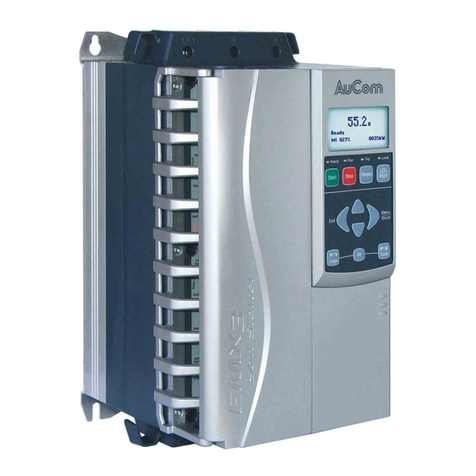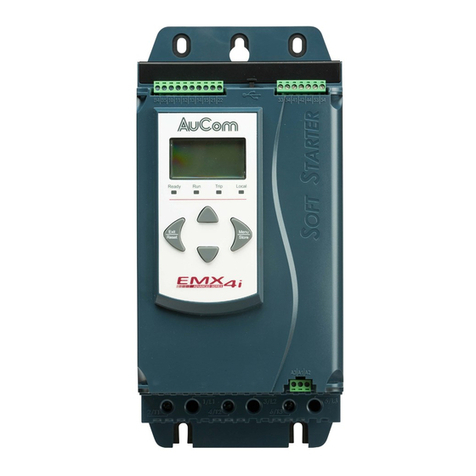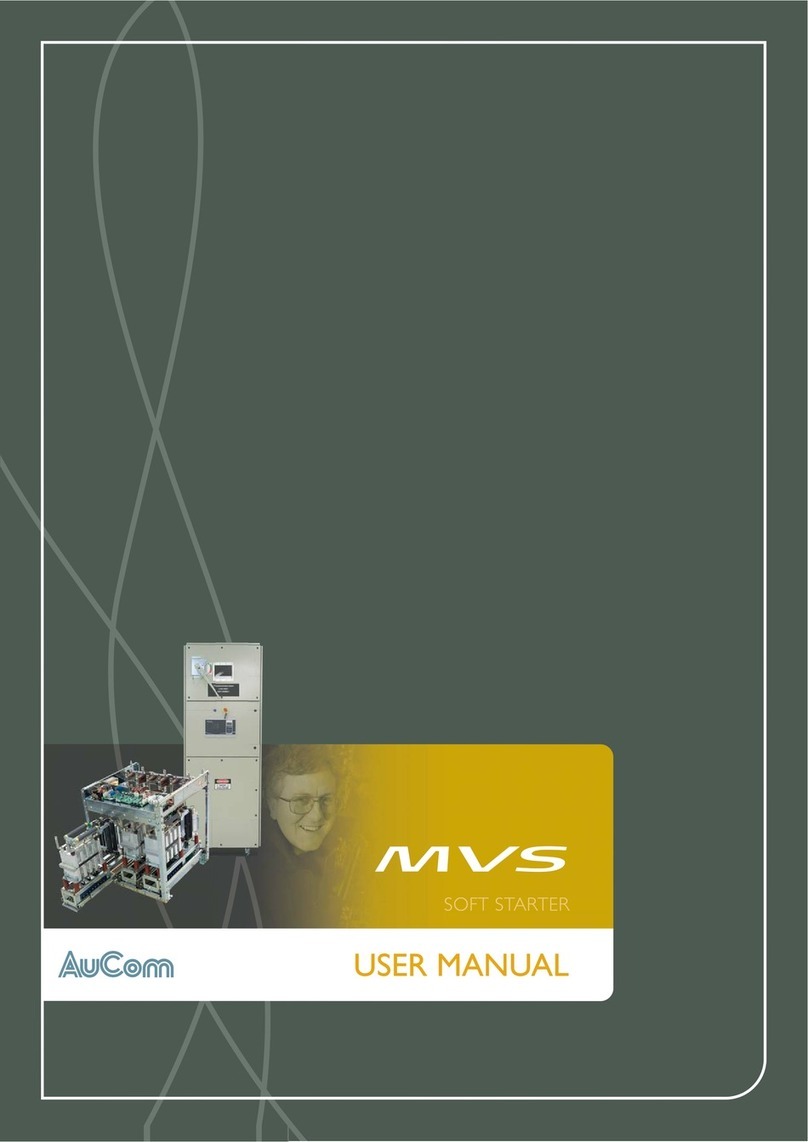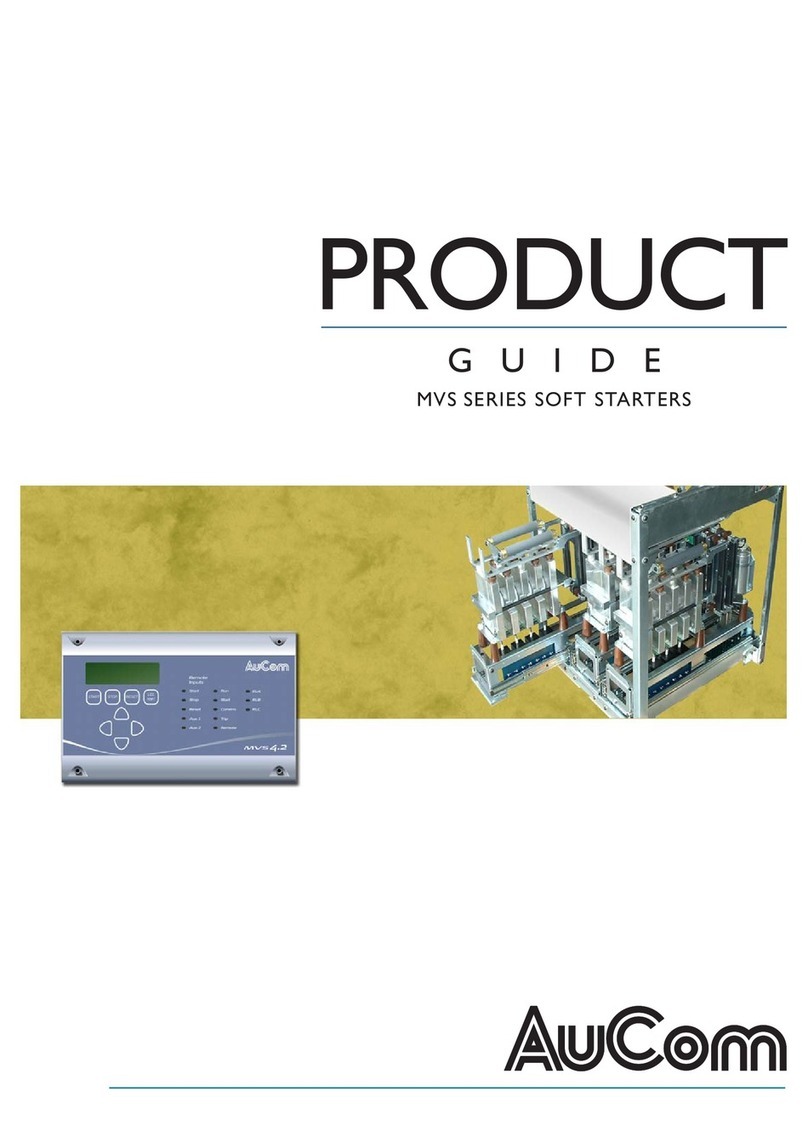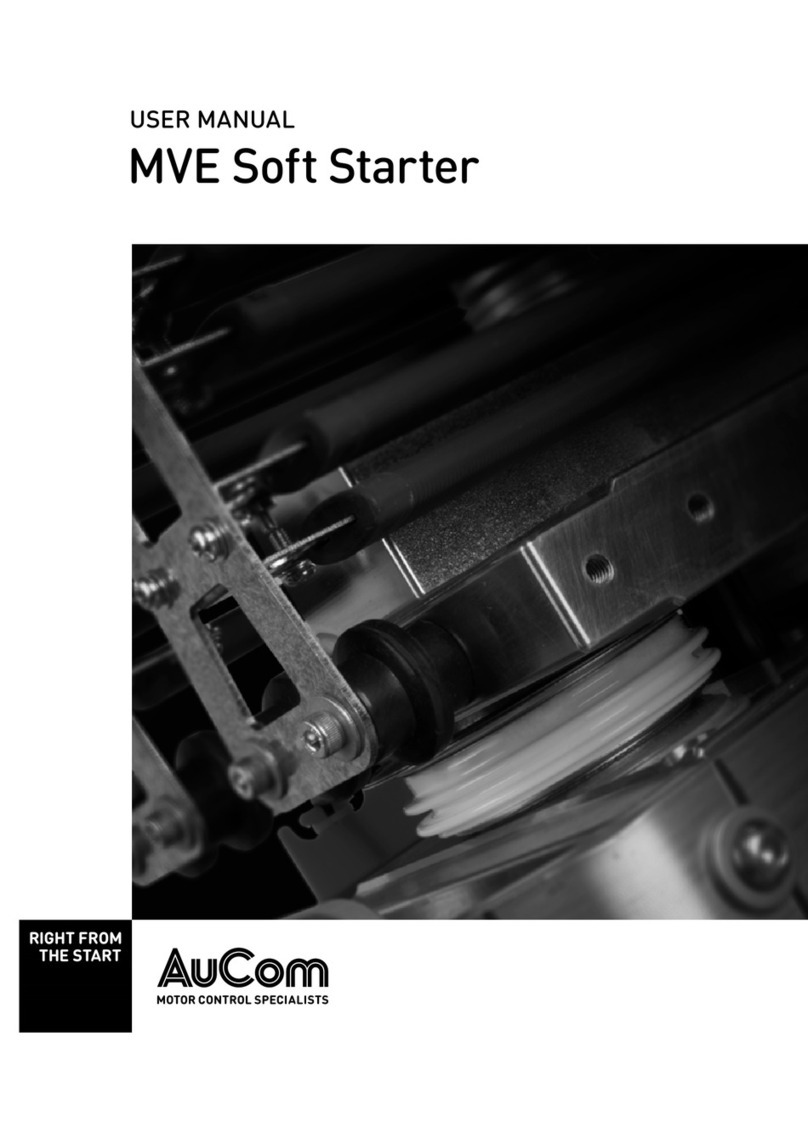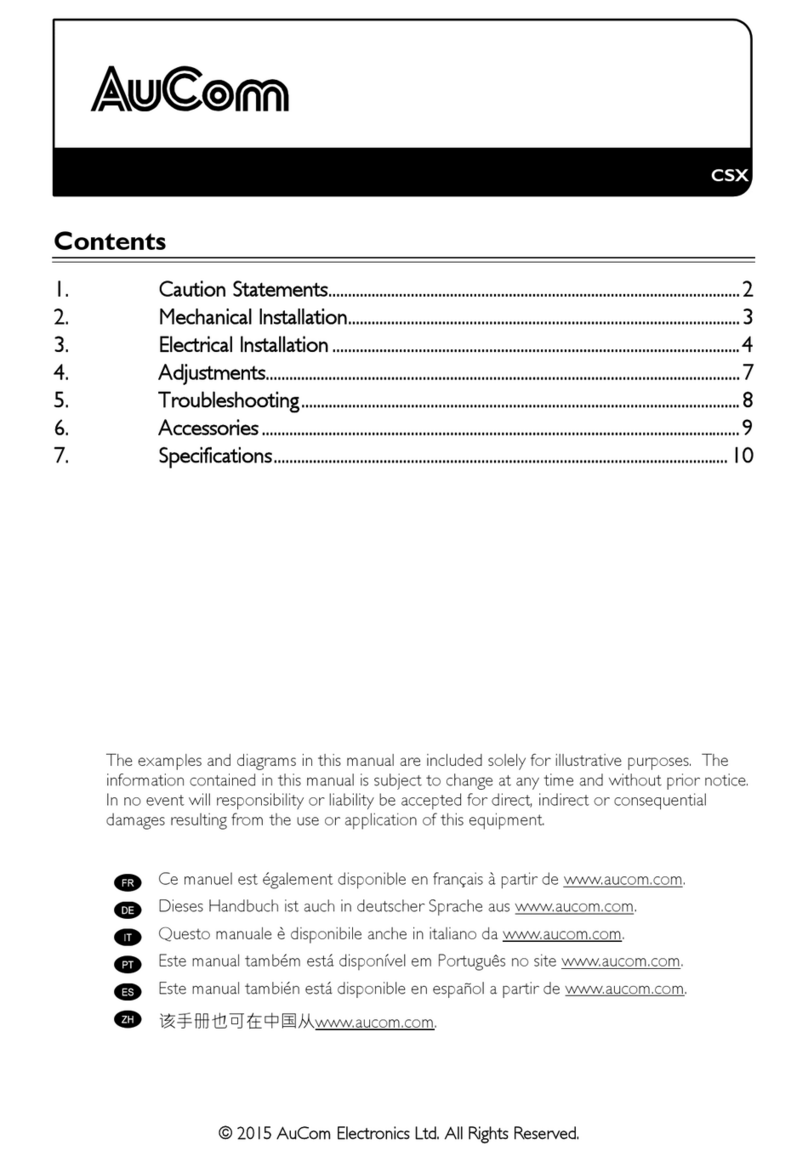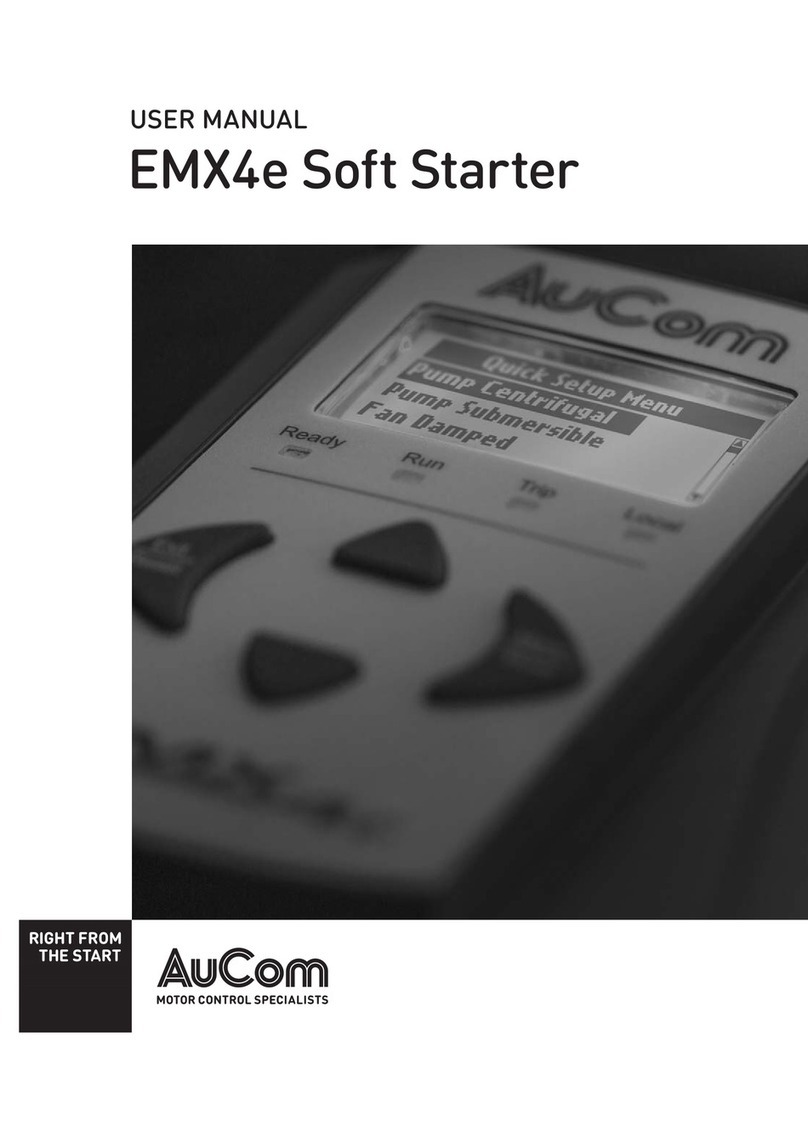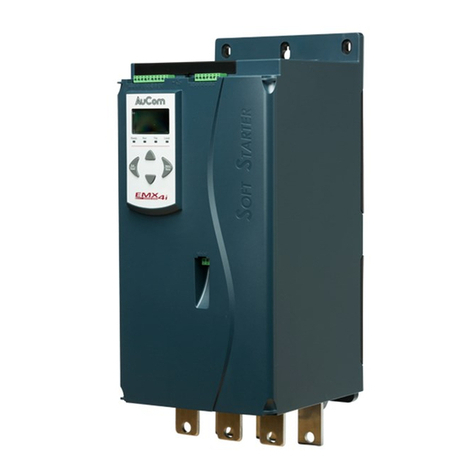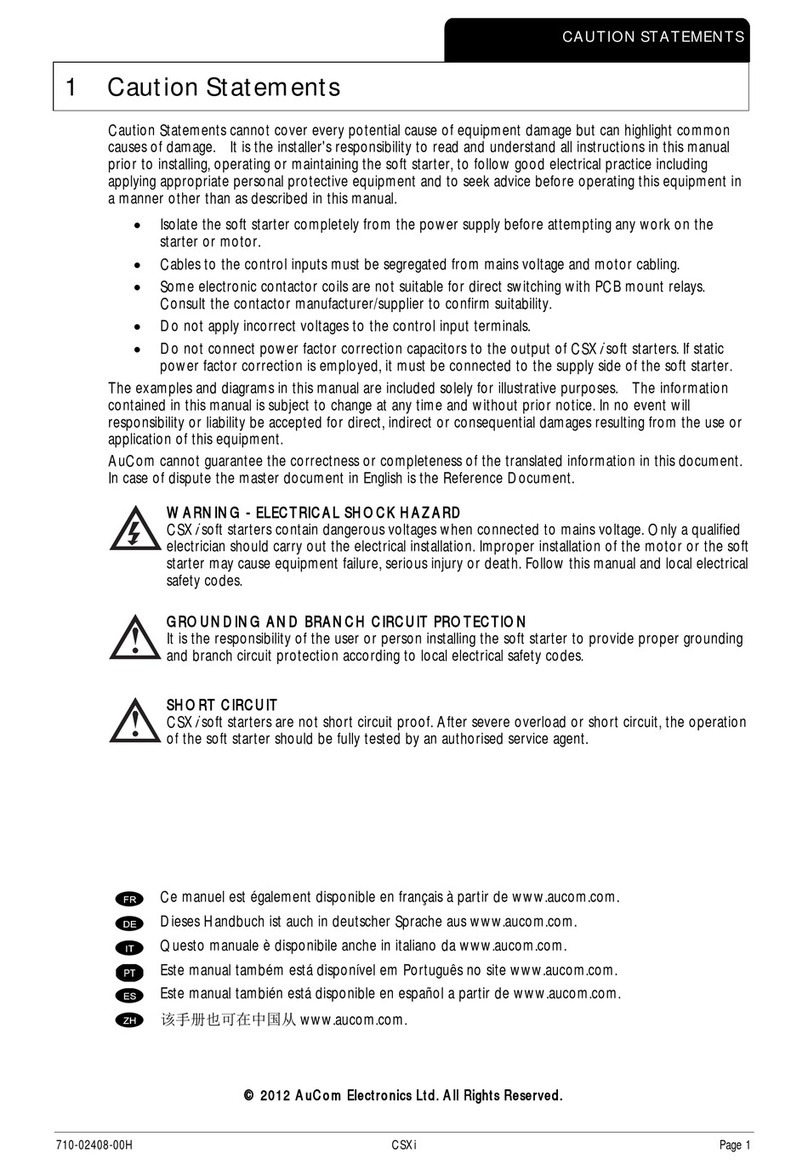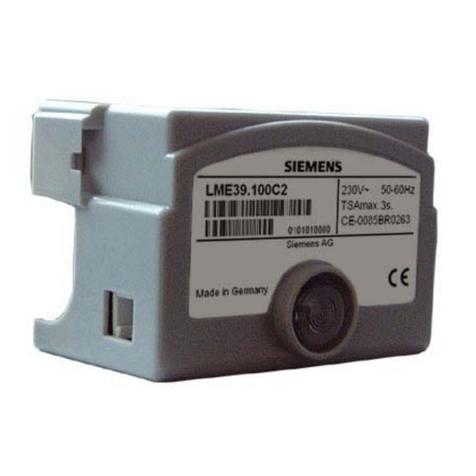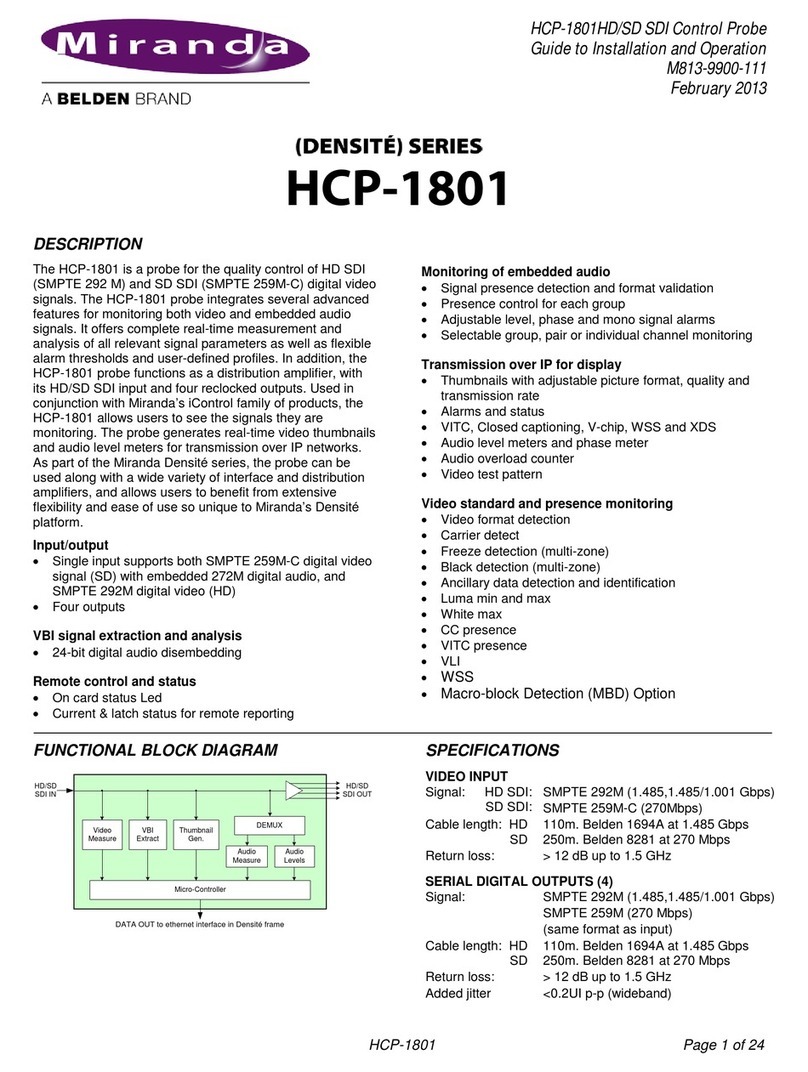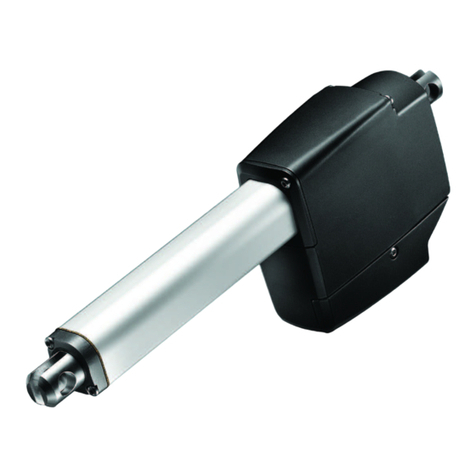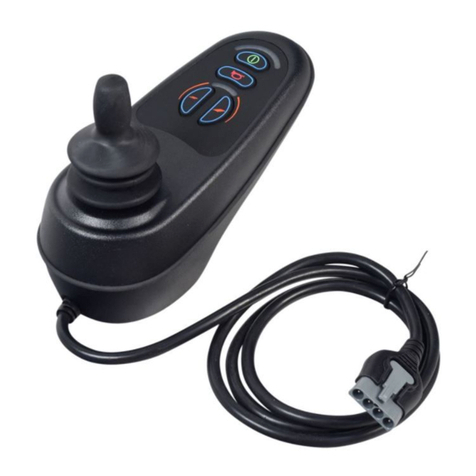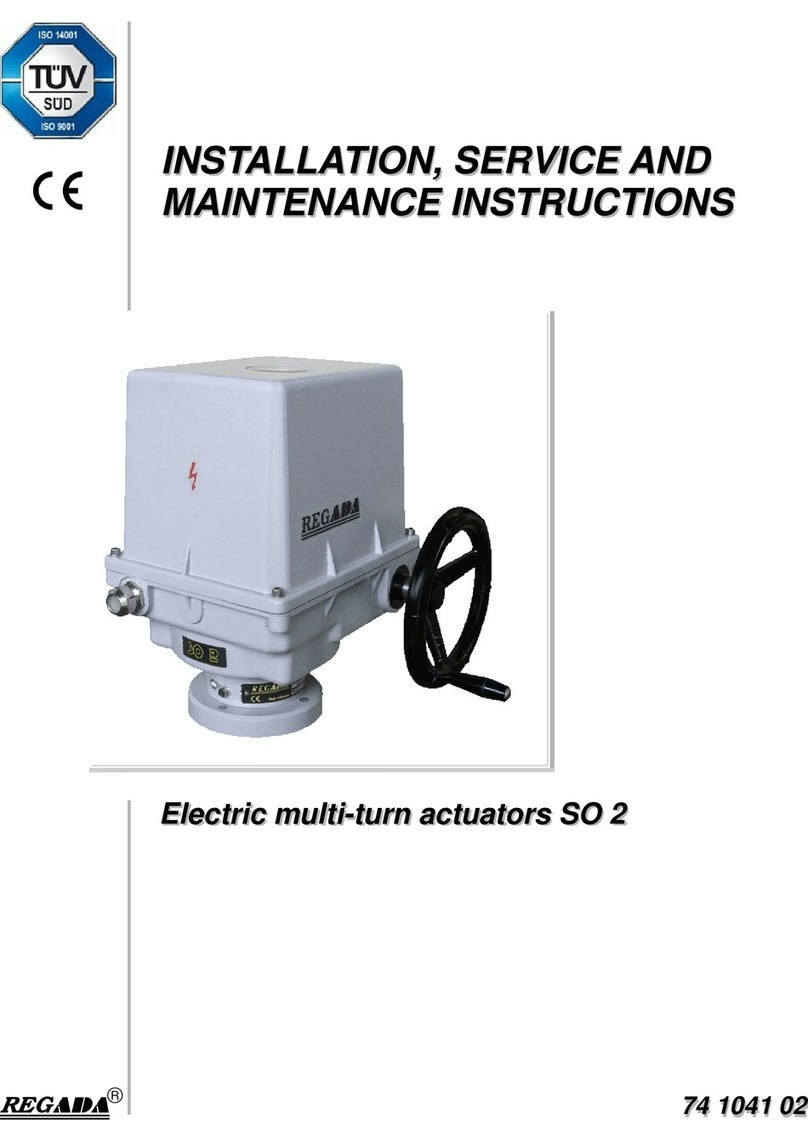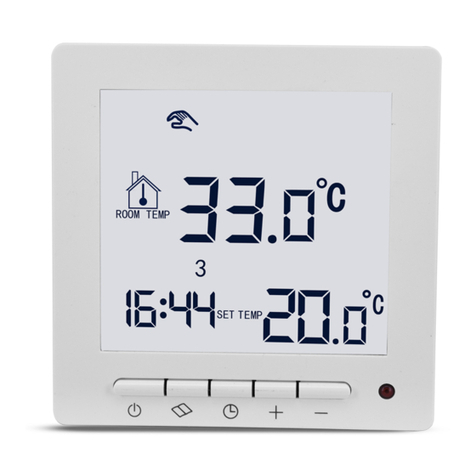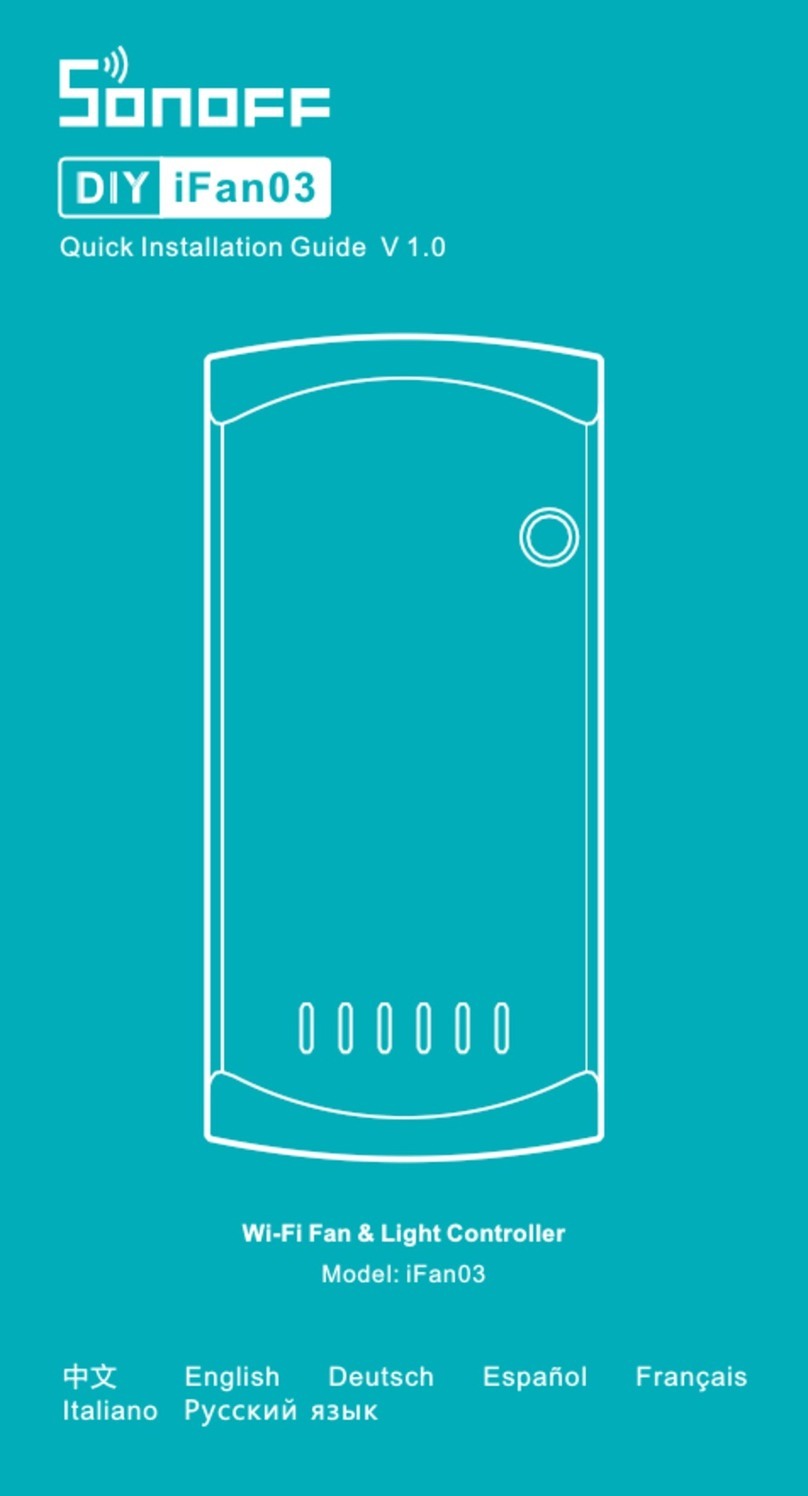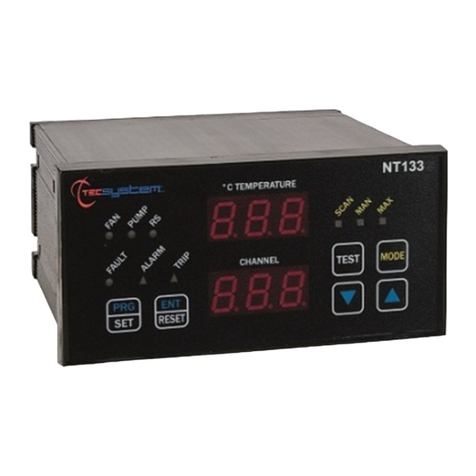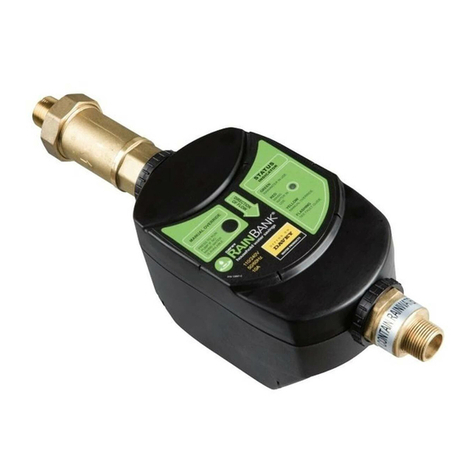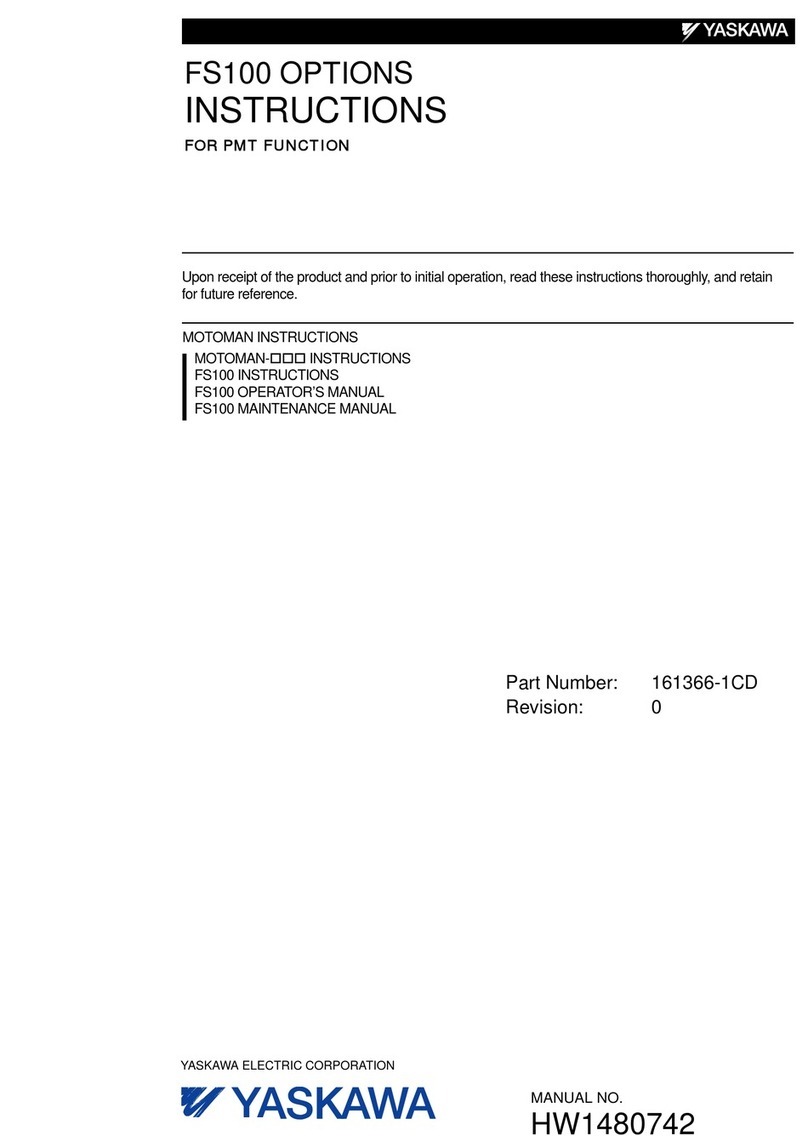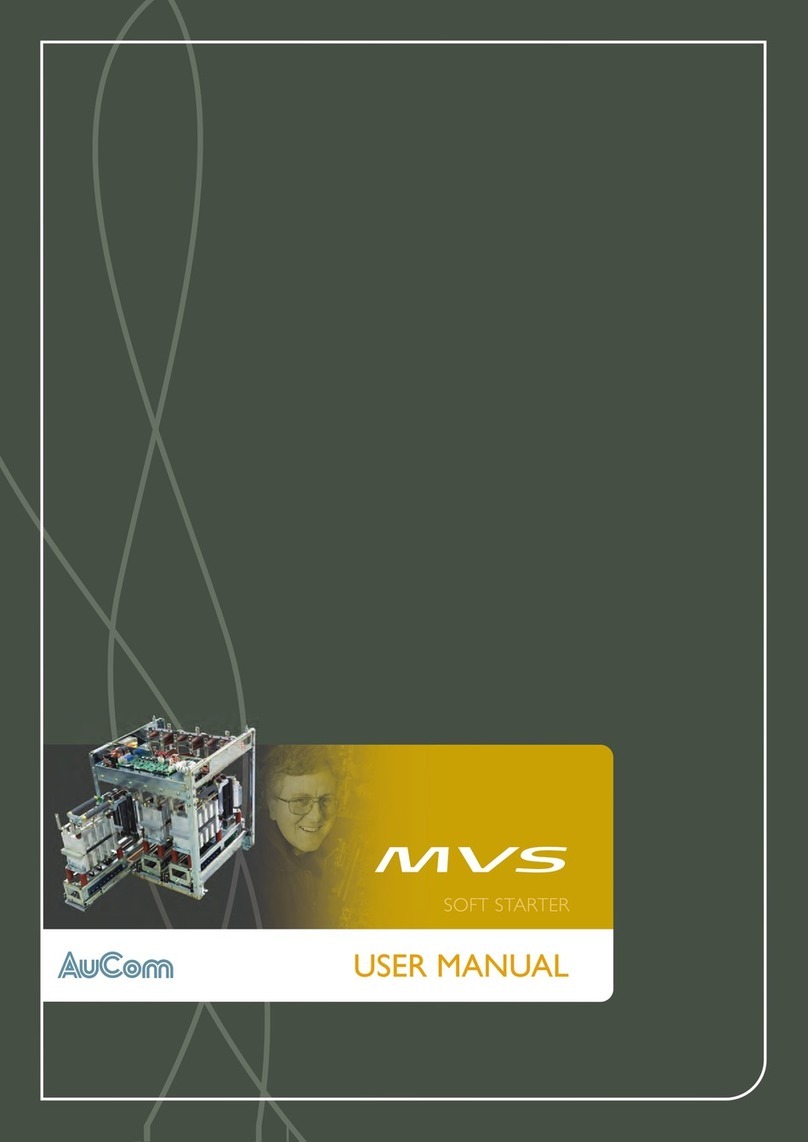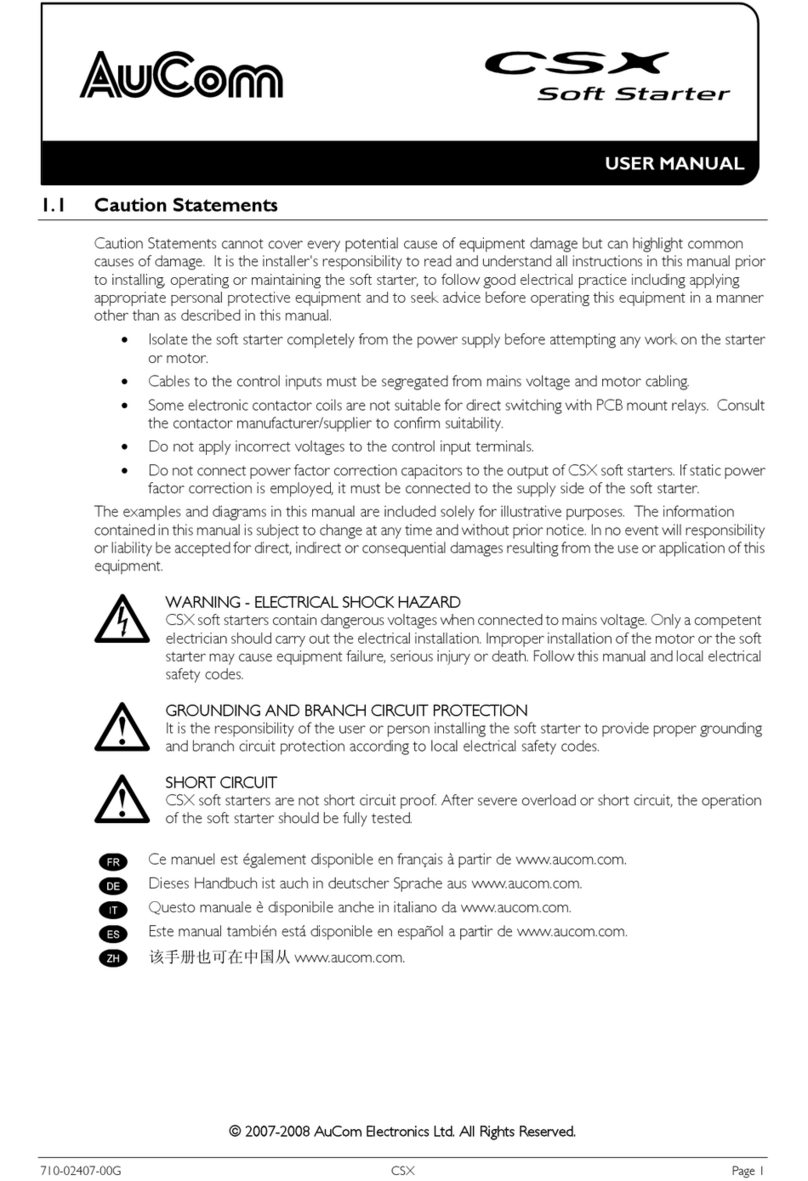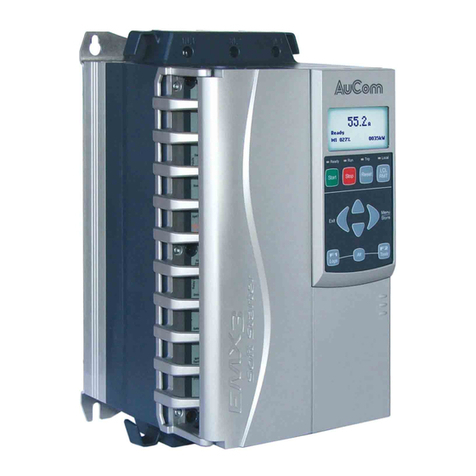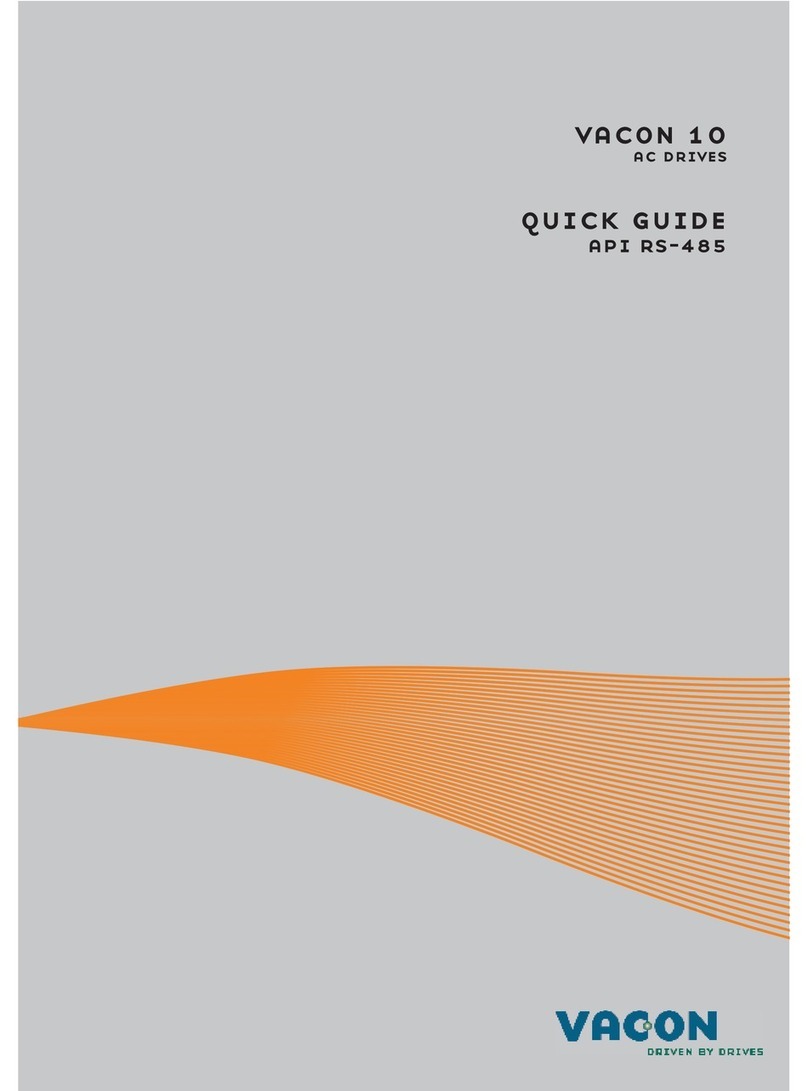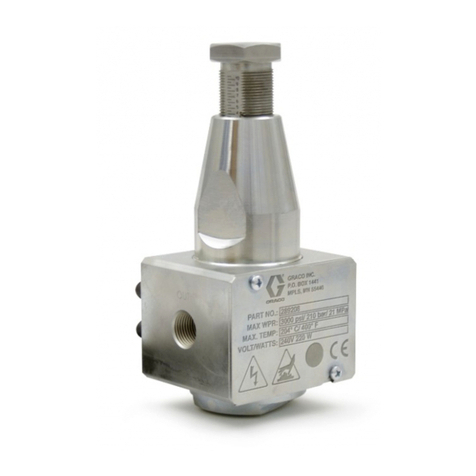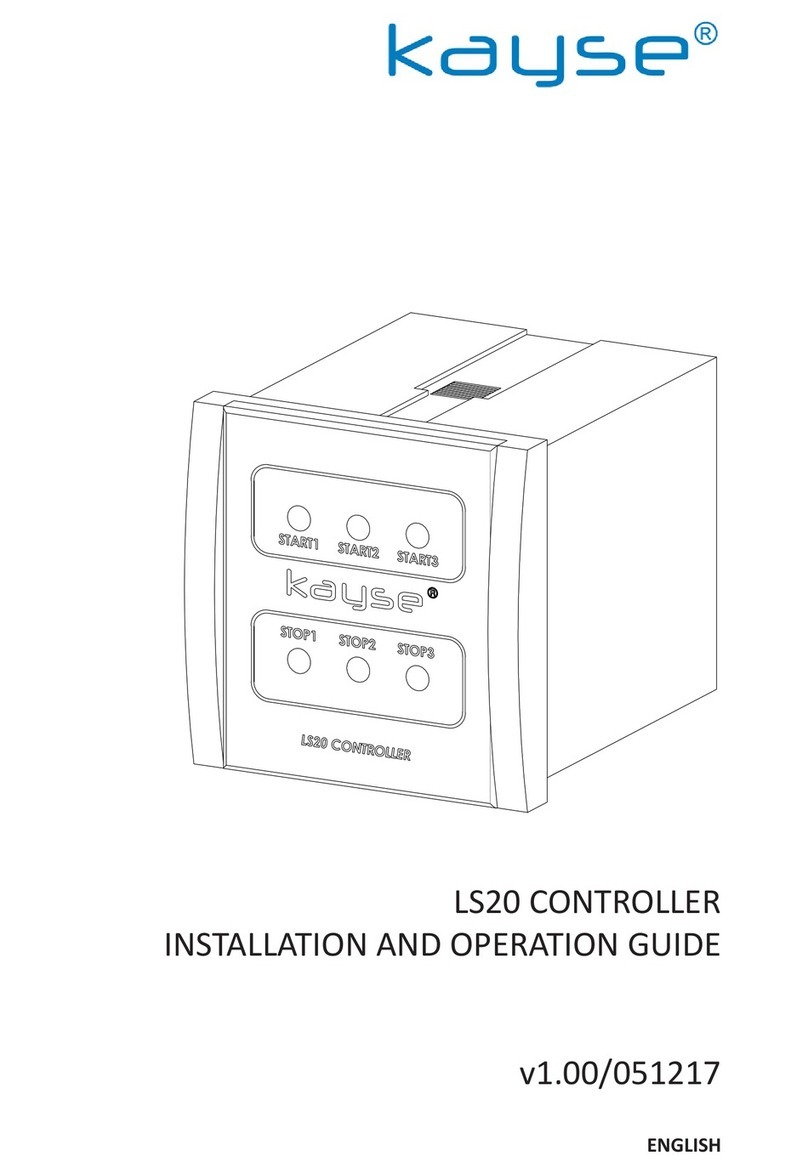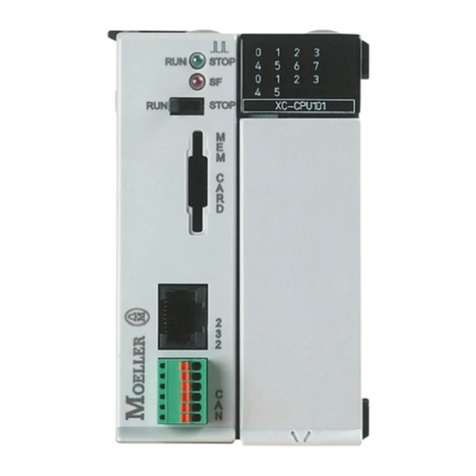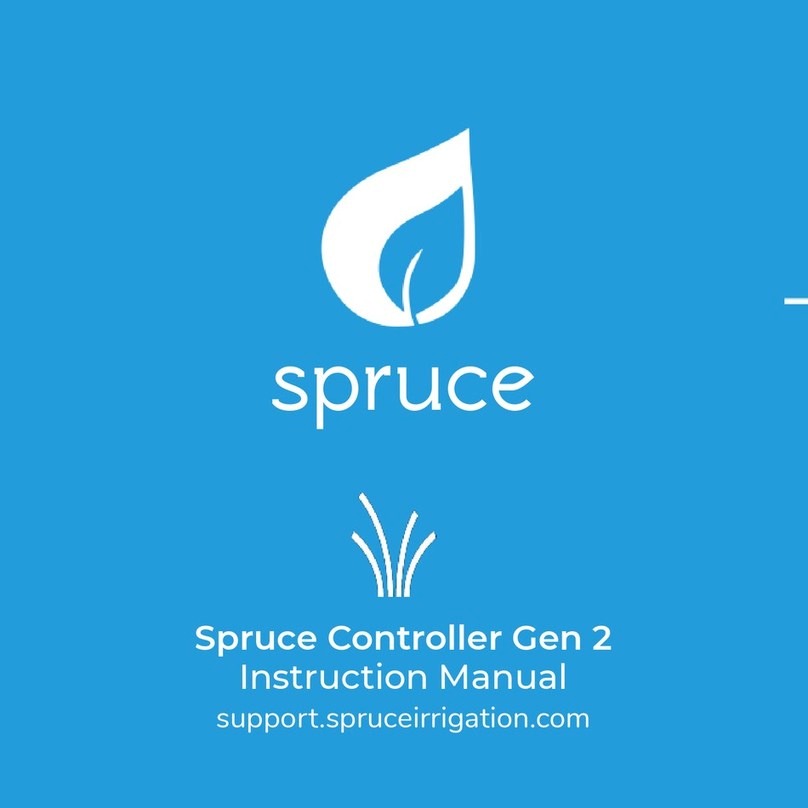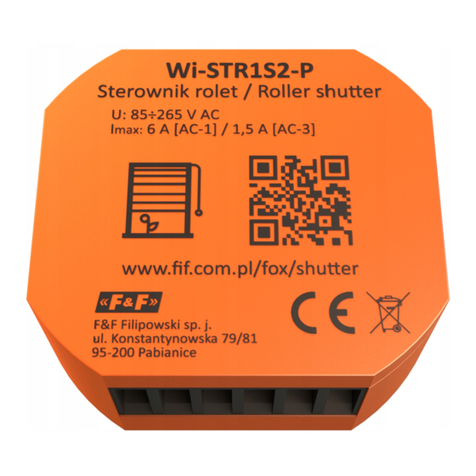TROUBLESHOOTING
710-02696-00C CSX Series Page 3
2.1 Functional Tests
Use the tests in this section to identify the cause of problems with the soft starter.
Basic Functionality Test
This procedure tests that the soft starter is receiving control voltage.
1. Remove all external wiring from the soft starter control inputs (01, 02).
2. Connect the soft starter to control voltage (A1-A2 or A2-A3).
•The Ready LED should come on. If it does not, the Main Control PCB is damaged.
Power Circuit Test
This procedure tests the soft starter's power circuit, including the SCRs, Interface PCB and Main Control PCB.
1. Disconnect the soft starter from mains voltage (L1, L2, L3), control voltage (A1, A2, A3) and from the motor (T1,
T2, T3).
2. Use a 500 VDC insulation tester to measure the resistance across L1-T1, L3-T3, T1-L1 and T3-L3. The resistance
should be between 30 kΩand 500 kΩand equal for all measurements.
•If the resistance is below 30 kΩfor any measurement, the SCR or bypass relay on that phase has been
damaged and must be replaced.
•If the resistance is above 500 kΩfor any measurement, the Main Control PCB or Interface PCB may be
faulty or there may be a faulty connection between these two PCBs. To isolate the fault, perform the
PCB integrity test.
CSX Start Performance Test
This procedure tests that the CSX soft starts correctly.
1. Connect the CSX to mains voltage and to a motor.
2. Measure the voltage across L1-T1 and L3-T3. This should be close to the nominal mains voltage.
•If the voltage is zero, the SCR or bypass relay on that phase may have failed.
3. Command the CSX to start. While the CSX is starting, measure the voltage across L1-T1 and L3-T3. The voltage
should fall to less than 2 VAC just before the CSX reaches Run mode.
•If the voltage remains near nominal mains voltage, the SCR is not firing correctly. This can be caused by
a faulty Main Control PCB, a faulty Interface PCB, or a poor connection between these two PCBs. To
isolate the fault, perform the PCB integrity test.
CSXi Start Performance Test
This procedure tests that the CSX
i
soft starts correctly.
1. Calculate the expected motor start current by multiplying the CSX
i
current rating by the Motor FLC setting and
the Current Limit setting.
2. Connect the CSX
i
to mains voltage and to a motor.
3. Command the CSX
i
to start. While the CSX
i
is starting, measure the current on L1 and L3.
•If the current does not stabilise at expected level, the SCR is not firing correctly. This can be caused by a
faulty Main Control PCB, a faulty Interface PCB, or a poor connection between these two PCBs. To
isolate the fault, perform the PCB integrity test.
Bypass Relay Test
CSX Series soft starters incorporate internal bypass relays. This procedure tests the operation of the internal bypass
relays.
1. Connect the soft starter to mains voltage and to a motor.
2. Measure the voltage across L1-T1 and L3-T3. This should be close to the nominal mains voltage.
•If the voltage is zero, the SCR or bypass relay on that phase may have failed.
3. Command the soft starter to start. When the Run LED stops flashing you should hear the bypass relay close.
Section 2 Troubleshooting




















